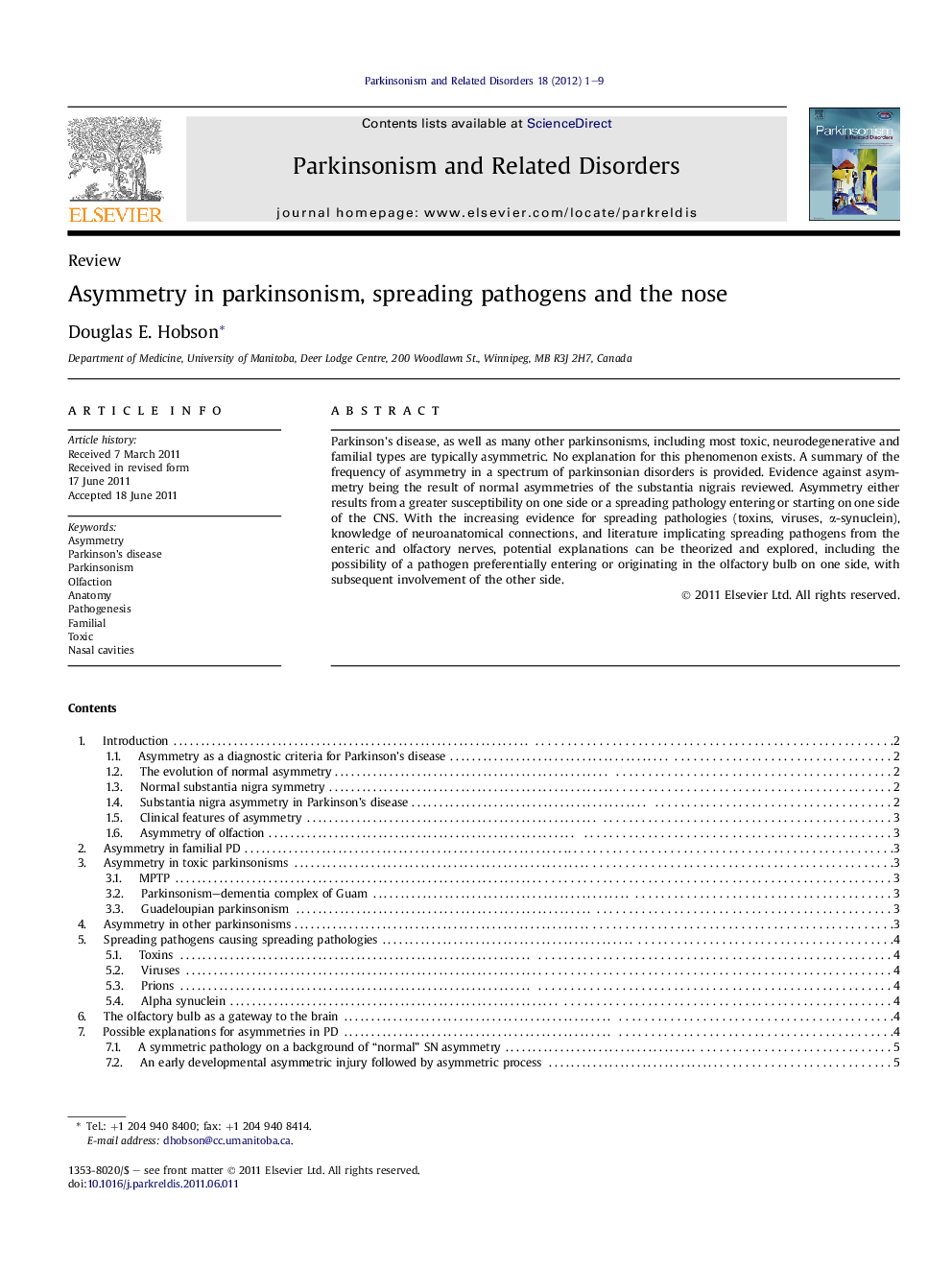| Article ID | Journal | Published Year | Pages | File Type |
|---|---|---|---|---|
| 1920654 | Parkinsonism & Related Disorders | 2012 | 9 Pages |
Parkinson’s disease, as well as many other parkinsonisms, including most toxic, neurodegenerative and familial types are typically asymmetric. No explanation for this phenomenon exists. A summary of the frequency of asymmetry in a spectrum of parkinsonian disorders is provided. Evidence against asymmetry being the result of normal asymmetries of the substantia nigrais reviewed. Asymmetry either results from a greater susceptibility on one side or a spreading pathology entering or starting on one side of the CNS. With the increasing evidence for spreading pathologies (toxins, viruses, α-synuclein), knowledge of neuroanatomical connections, and literature implicating spreading pathogens from the enteric and olfactory nerves, potential explanations can be theorized and explored, including the possibility of a pathogen preferentially entering or originating in the olfactory bulb on one side, with subsequent involvement of the other side.
